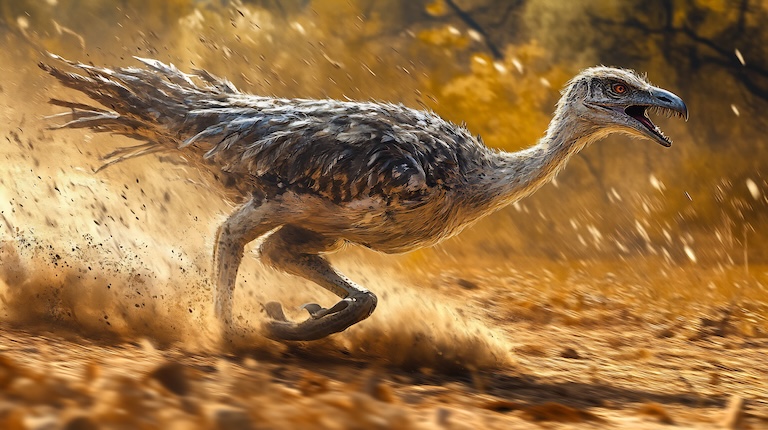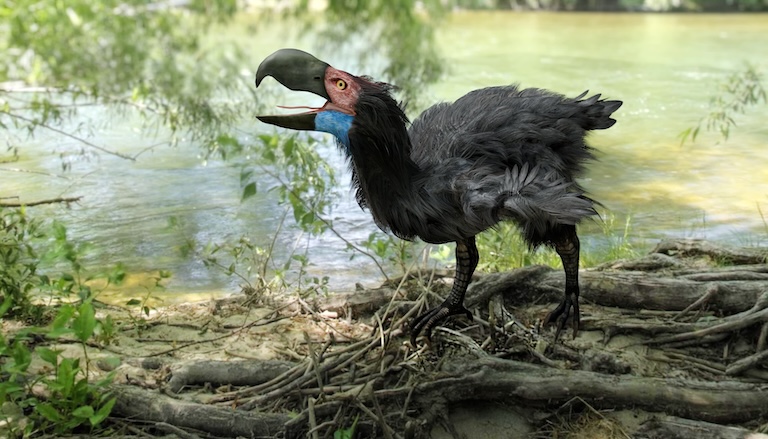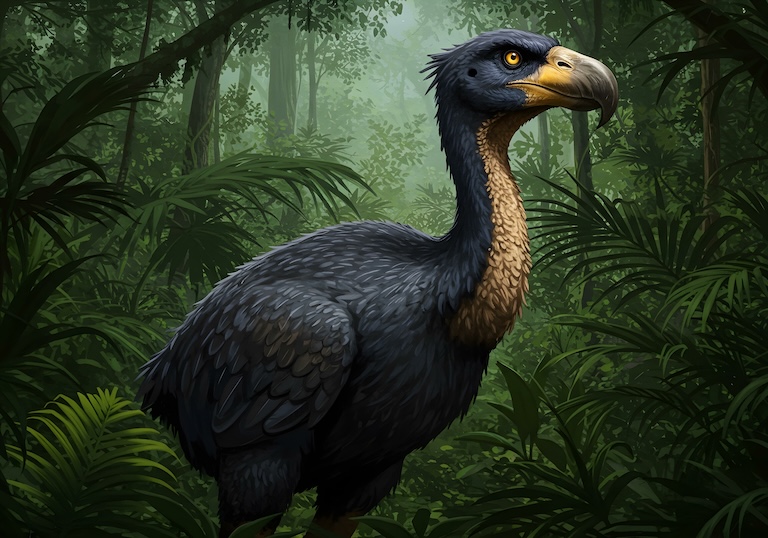Terror Birds Profile
It’s commonly said that dinosaurs died out around 66 million years ago when a big old rock bumped into the planet and wiped out 76% of all living on the Earth. And to be fair, we wouldn’t be able to commonly say this if it weren’t mostly true, because as mammals, we’d still be under their thumb claw to this day.
But it’s not the whole story. Not all dinosaurs did die out. Terror birds, for one, frightened their prey well into the time of prehistoric humans.
Terror Birds Facts Overview
| Habitat: | Varied: savanna, wetlands, grasslands, wooded areas |
| Location: | South and Central America |
| Lifespan: | Unknown |
| Size: | From 1 to 3 meters (3 to 10ft) |
| Weight: | 7kg to 250kg (15lb to 550lb) |
| Colour: | Unknown |
| Diet: | Thought to be carnivorous, some vegetatian |
| Predators: | North American Pleistocene hunters |
| Top Speed: | 48km/h (30mph) |
| No. of Species: | 25 known |
| Conservation Status: | Extinct |
Sadly, by the time humans arrived in South America, dominant mammalian predators had more or less wiped out the majority of terror bird species in the region.
Only a few smaller examples remained, demure reminders of a land before time, and a time before mammals took their rightful position as kings of their domain!
Until surprisingly recently by evolutionary standards – perhaps only a couple of million years ago – three-meter-tall predatory dinosaurs roamed the continent and even after this, countless huge birds occupied predatory niches, just as they would have done before the asteroid.
By the time humans arrived, most of the giants had gone, but there were some species remaining, and we’re still trying to piece their legacy together from paleontological discoveries today.
Interesting Terror Birds Facts
1. They were modern dinosaurs
After the Cretaceous extinction event, some of the smaller therapods survived the catastrophe and remain with us to this day.
Birds are avian dinosaurs, and while this might be hard to remember when looking at the dorky face of a penguin, other species make it very clear. Cassowaries and secretary birds are just a couple of the extant animals that remind us of the bipedal ancestors of all modern birds.
And the terror bird, though now extinct, would have looked as at home in Jurassic Park as it did when it shared South America with prehistoric humans.

2. Some were smaller
Small is a relative term, and while the smallest terror bird is only a third of the size of the largest, it was still a meter tall, twice the size of a velociraptor. These flightless birds would have been incredibly fast runners, with powerful beaks and a “sickle claw” for tearing into flesh.
Psilopterus lemoinei would have been roughly the size of a Philippine eagle and certainly would have been a good match for a single, unarmed human. But the largest of the terror birds would have struck fear into animals far larger than us. 1
3. Some were terrifyingly big
The largest bird skull ever found belongs to a bird that likely would have been able to run at 48km/h, and would have sat 3 meters up on top of Kelenken guillermoi, the biggest terror bird discovered so far.
The skull alone was 72m (28 inches) long, with a sharp curved hook, and implies a truly fearsome owner. But what was this enormous head for? 2 3
4. They had robust skulls
This enormous skull wasn’t just large, it was strong, too. The rigidity of the skull suggests that this bird wouldn’t have been very good at grappling with large prey.
Animals that bring down large mammals tend to have more flexible skulls, allowing them to ‘go with the flow’ of a struggling victim without incurring too much stress on the bones of the head.
So, could the terror bird have been limited to smaller animals? Not necessarily. [Glyptodon] remains have been found with damage to a specific part of their skull from human hunters. It’s possible that an enormous, piercing beak like this could have imparted a killing blow to a large, well-armoured animal such as this, killing it swiftly.
But there is also the matter of the claw. It’s not known whether terror birds were social or solitary, and a pack of these scary predators would have been able to attack with claws and beaks, wearing down larger animals over time.
Still, the mystery of how this animal ate remains to be solved. 4
5. Some were vegetarian?
One interesting hypothesis out of Europe suggests that a similar lineage of giant, flightless birds may not have hunted at all.
Scanning for various isotopes in bones and identifying their ratios can tell researchers a lot about the nutrients that went into the animal.
This giant, hooked overbite does resemble that of some of the powerful seed-crushers of our time such as the glamourous Mackaw or the shell-crushing beak of an octopus. Could the terror bird have been a harmless vegetarian giant, feeding on nuts and fruits?
The folks running the isotopic analysis on one species’ bones seem to think so. The calcium levels found in the remains of Gastornis resemble that of a herbivore; they’re much lower than are typically found in carnivores. 5
6. Some could have been waders
If you look at a map of the South Atlantic, you might notice that South America and Africa look remarkably like puzzle pieces that fit together. And this is because they once did. Gondwana was a supercontinent made up of these two land masses until they eventually drifted apart about 150 million years ago.
At that time, South America became an isolated island continent and drifted slowly toward North America, before finally bridging via Central America to form a land-based connection, during which the largest exchange of wildlife we know of occurred.
But, this connection was made roughly 3 million years ago, and there are fossils of the giant terror bird Titanis in North America dating back to 5 million years.
So, it’s very possible that there were early channels of shallow waters before the land bridge was completed, meaning that the terror bird was perhaps a competent wader.
7. They didn’t do well against the North American Megafauna
This faunal exchange was not a very even deal. The lack of scary mammalian predators in South America led to the evolution of a bunch of complacent giants that were easily picked off by immigrant hunters as they entered the continent from the North.
Conversely, herbivores were in a lot more danger in North America, and the predators that came with them had a lot more competition.
This might have been the beginning of the end for the terror birds, who got progressively smaller, and eventually went extinct, with a few smaller species holding out long enough to have their eggs eaten by human migrants.

Terror Birds Fact-File Summary
Scientific Classification
| Kingdom: | Animalia |
| Phylum: | Chordata |
| Class: | Aves |
| Order: | Cariamiformes |
| Family: | Cariamae |
| Genus: | Phorusrhacidae |
Fact Sources & References
- “Psilopterus”, Prehistoric Fauna.
- Luis M. Chiappe (2006), “Skull morphology of giant terror birds”, nature.
- Sara Bertelli (2007), “A New Phorusrhacid (Aves: Cariamae) from the Middle Miocene of Patagonia, Argentina”, JSTOR.
- Monica Desai (2010), “Carnivorous ‘terror bird’ pecked its prey to death”, The Guardian.
- Dr. Stephen Galer (2013), “Terror bird was frightening but harmless”, Max-Planck-Gesellschaft.

